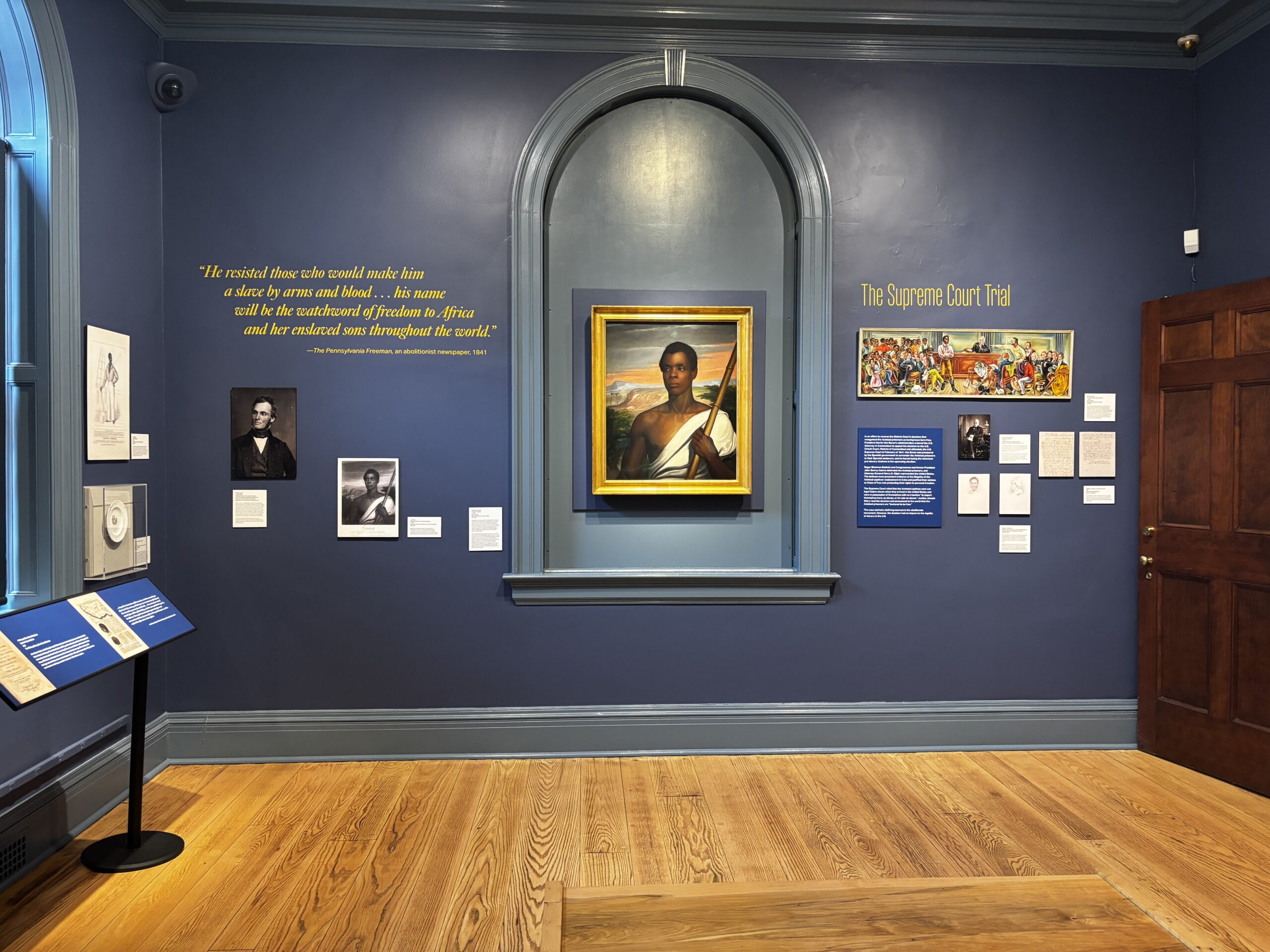Newly redone Amistad exhibit takes new approach to New Haven history
The newly redone exhibit at the New Haven Museum features new documents, art and opinions on the Amistad revolt.

Eric Song, Contributing Photographer
The newly redone exhibit at the New Haven Museum features new documents, art and opinions on the Amistad revolt.
The New Haven Museum officially opened its doors to the newly revamped “Amistad: Retold” exhibit this past May, intertwining the story of the Amistad slave revolt with the city of New Haven.
The exhibit has been remodeled to boast a large collection and a new lively exhibition room. It centers around the people involved in the revolt’s movement through the United States legal system and their integration into society. The exhibit also takes a special look at the Amistad in New Haven, establishing the city’s role within the abolitionist movement prior to the Civil War.
“Without the Amistad story, this museum would not exist,” Museum Educator and Researcher Eve Galanis said. “The original founders of what is now the New Haven Museum had this archive and treasure trove of what occurred with [the Amistad].”
According to Galanis, this archive was the driving force behind the museum’s establishment.
The collection adds to a greater global context surrounding the Amistad, as well as contributes more detail to its legacy.
The slave revolt aboard the Amistad took place in 1839, as enslaved people from Sierra Leone were being transported to Cuba. The Amistad vessel, now controlled by the captives, made its way into the Long Island Sound. Intercepted by the United States Navy, the revolters were taken to the New Haven Jail. They were acquitted following a criminal trial held at the Hartford Circuit Court and a federal trial held at the New Haven District Court and Supreme Court of the United States.
When asked what makes this exhibit special, Museum Director of Learning and Engagement Joanna Steinberg said that the selection of original artworks dedicated to the Amistad as well as firsthand documentation and testimony from the people involved sets the exhibition apart and leaves an impression.
“You can read books, but one should come here to see the original artworks. That, to me, really leaves an impression, to see the portraits of the revolt leaders,” says Steinberg.
The exhibit is the result of years of collaborative work between the Amistad Committee, New Haven educators and Yale scholars, according to Galanis.
The exhibit took one year to complete, though the idea for its creation was floated around for many years prior while funding and grants for the project became available. The remodeling, which took several months, focused on making the information provided more accessible, according to Galanis.
“We had so many people involved in the research process. We had to make sure everyone gave their stamp of approval.”
The new exhibit focuses specifically on the stories and testimonies of the enslaved and captive members of the Amistad. These testimonies were given at the New Haven District Court in 1841.
Galanis emphasized that these testimonies are crucial to the redone exhibit, as they allow for visitors to understand how the revolters won their freedom legally.
“The enslaved people and the Amistad captives were central to their own freedom and their own emancipation. It wasn’t granted to them,” she said.
The exhibit also focuses on the multiracial movement to free the captives through the American legal system. It highlights topics such as interracial organizing, racial justice, the role of language in criminal justice and the power of the arts to shape history, which were crucial to the Amistad’s fighting of injustice.
Charles Warner Jr., the current chairman of the Connecticut Freedom Trail, described the effort as trying to convey both the historical context of the Amistad and the lessons the city has taken from it.
“This particular exhibit gives voice to what the people of the community did to support the abolitionist effort,” Warner said.
The people of the Amistad faced legal tribulation within the city of New Haven itself, having been imprisoned at the local jail and tried at the District Court. New Haven residents, religious leaders, scholars and activists came together to help the Amistad revolters make their defense.
The museum is dedicated to including this exhibit in their education initiative. The exhibit has already been hosting local schools and recently held a professional learning day for city educators to learn about the history of the Amistad.
“The significance of this exhibit is to be able to reach young students and to allow them to access this story,” Galanis explained.
The new exhibit is free to visitors and is open to the public from Wednesday to Saturday.







